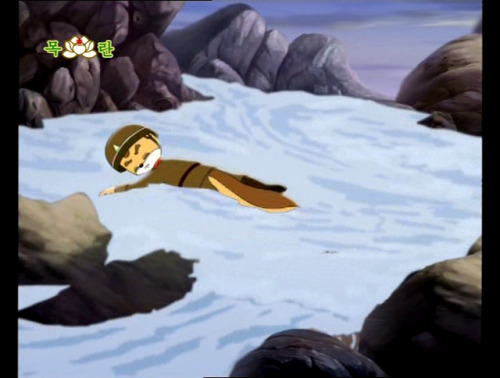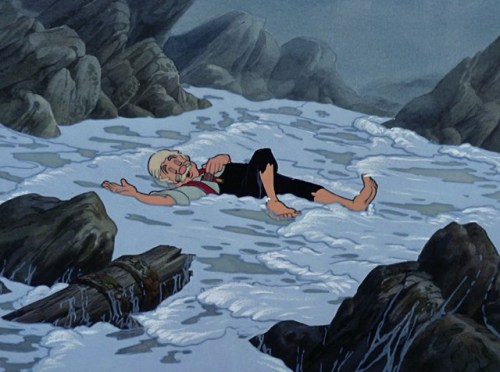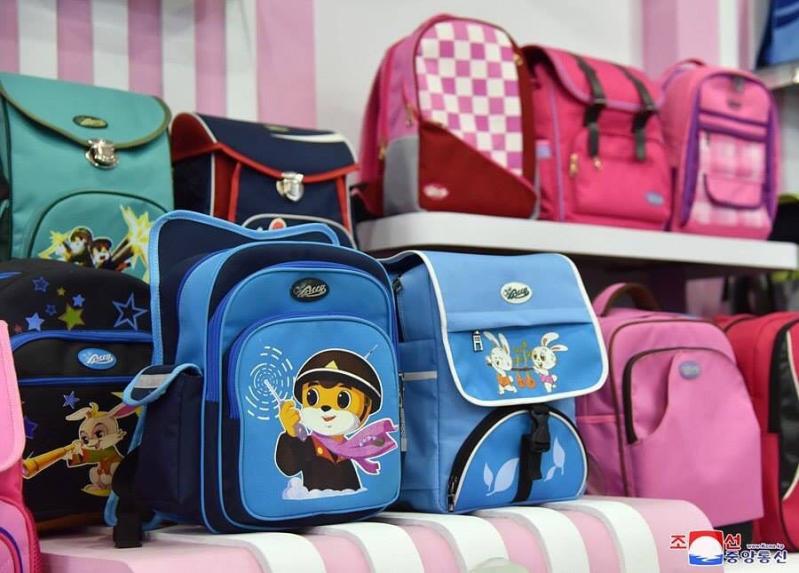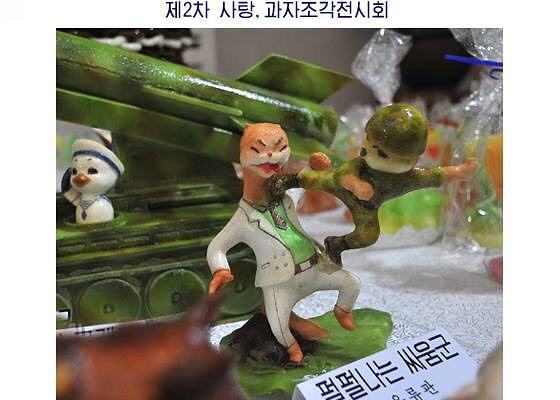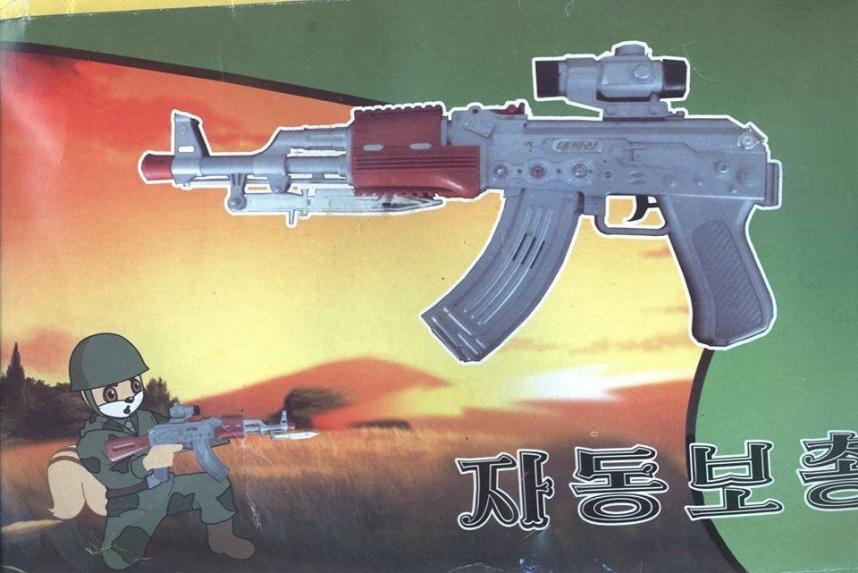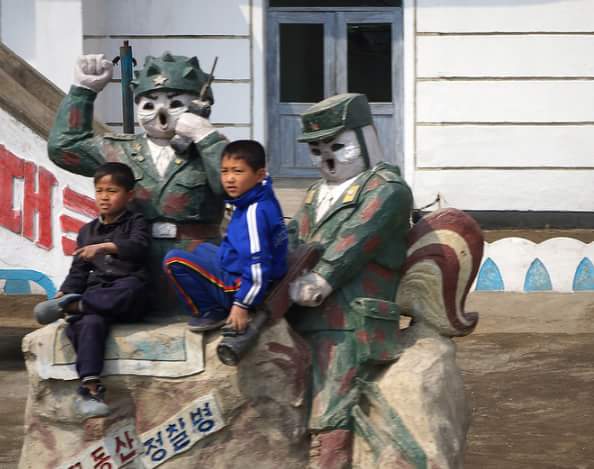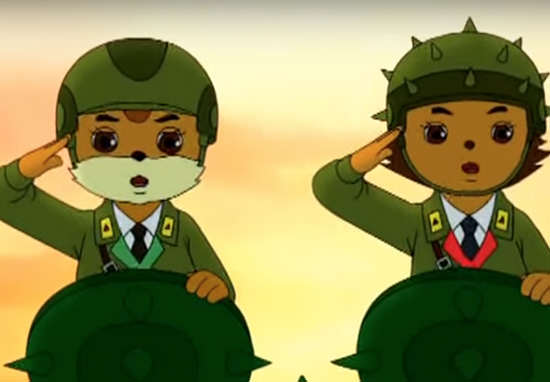
We were all kids once. I wager that as kids, we all liked to watch cartoons. Grandparents maybe watched Tom and Jerry or Bugs Bunny, all ages grew up with Disney, the last thirty or so years have been inundated with Cartoon Network, Nickelodeon and others. Hell, even the current generation has a wealth of cartoons streaming onto Netflix or elsewhere! We’re spoiled for choice with many classics that are icons of television as a medium to this very day.
You might know that in North Korea, a lot of those shows and TV channels are pretty much unheard of. They don’t have Donald Duck and Mickey Mouse, but does that mean they don’t have animation of their own? We’ve touched before on the DPRK’s animation studio that helps out western movies and TV shows, but what about the domestic products? Well, there’s quite a lot of them… Few perhaps more well known than Squirrel and Hedgehog.
Squirrel and Hedgehog is one of the DPRK’s most long-running animated shows. Airing (somewhat infrequently) between 1977 and all the way to 2012, it’s extremely well known within the country and even has some acclaim outside! It’s possibly the most well known DPRK animation in the west, with something of a cult following. Before we get to all that, we should discuss the premise.
Premise of Squirrel and Hedgehog
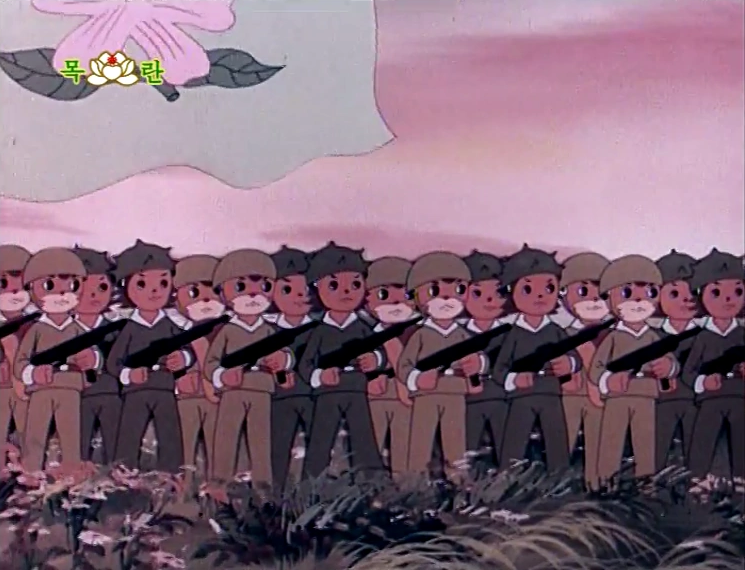
Squirrel and Hedgehog is set in the ‘nation’ of Flower Hill. Within Flower Hill, there are various villages for the different anthropomorphic (human-like) animals that live there. The squirrels have their village in a lovely woodland where they forage for nuts, the hedgehogs have a village of their own with a strong military… And there’s also villages for fowls and rabbits, but hey, let’s not make the series title too long.
Anyway, in the first episode, Flower Hill is abruptly invaded by a force of weasels and their subservient, suffering minions, the mice. Our protagonists are encouraged not to worry by a friendly bear called Uncle Gom, who promises to take care of them and who assures that no-one would dare attack with him around! Our main protagonists disagree and want the squirrels to become powerful in their own right, mainly through stealth rather than brute force. Sure enough, Uncle Gom gets shitfaced at the 11th hour and the squirrels and hedgehogs are forced to fend for themselves!
Adult Themes
It may sound rather ‘real’ for a kids show. That’s because it very much is. Themes of war, imperialism, espionage, murder, racism and to some extent even sexual exploitation are very much present throughout. At one point, a suicide even takes place! Squirrel and Hedgehog is not your usual kids show, I can certainly tell you that much.
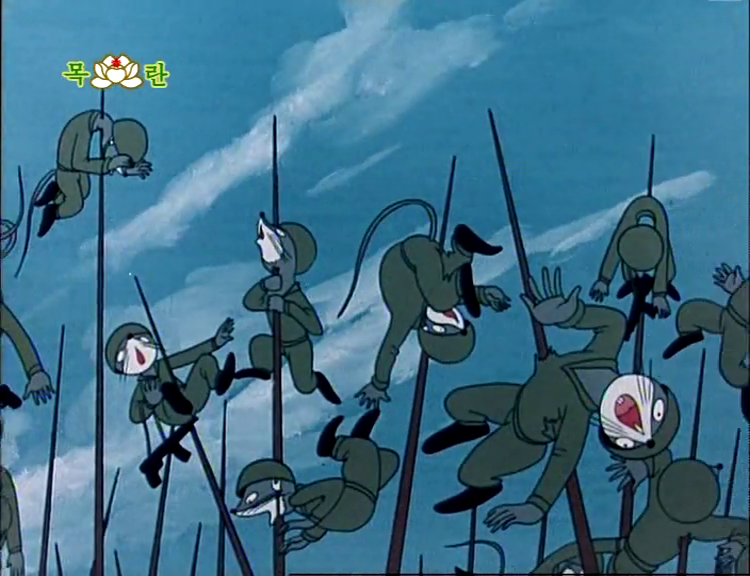
That said, there’s definitely some childhood stuff there. It is a kids show, even if it sometimes doesn’t act like it. Musical numbers are dotted throughout, with some becoming mainstays in the DPRK itself. ‘Let Us Fortify our Hill’, the main theme, in particular is popularly sang within the country.
This is all a rather basic premise that we’re going to be coming back to in time, as it very much changes, but let’s first have a think about the possible underlying themes. Now, SEK Studio which made the series have put it on record that the story isn’t meant to be a real world parallel, but when you look at it… It really does have a lot of parallels.
Squirrel and Hedgehog Subtext
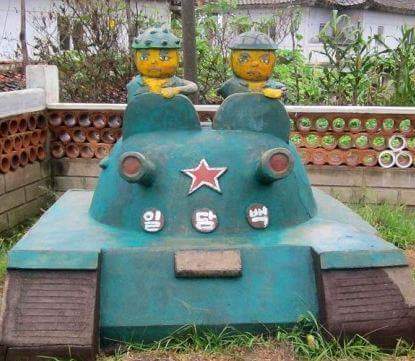
Okay so, Flower Hill is Korea. SEK say that it is not, but it seems clear to me that it’s analogous for the Korean peninsula, with flowers indeed being commonly seen as a symbol of the ‘motherland’ so to speak. This would make the squirrels and hedgehogs the Korean people, likely being the peasants and the military respectively! The weasels could be a reference to Japan or America, most likely Japan given the Japanese style coat worn by Commander Jogjebi from episode 5 onwards. As for the mice… Well, they often go undercover in disguise as squirrels and vice-versa while being under the thumb of the weasels. I don’t think it’s a huge stretch to say that they represent the south Koreans, or at least collaborators with the enemy.
Lastly we have Uncle Gom… Well, he’s a bear. And he promises the keep the people of Flower Hill safe because he’s so big and powerful. Then he gets drunk on what looks suspiciously like vodka… I’m just gonna go out on a limb here and suggest that Gom is an analogue for the Soviet Union. This being the end of the 70s especially, Juche ideology was firmly implemented within the DPRK and a big part of that was focus on independence and not having to rely on anyone else. Well-intended as Uncle Gom may be, it’s no substitute from being able to secure your own independence from foreign invaders! This was perhaps a particularly sore topic due to the USSR’s refusal to directly intervene in the Korean war beyond arms trade and a few fighter planes.
So yeah, SEK may deny it but I’m pretty sure you can draw some real world comparisons. This will not be the end of the comparisons, but first, let’s go back to talking about the show’s history.
Squirrel and Hedgehog Broadcast History
Debuting in 1977, there was little indication that Squirrel and Hedgehog would be such a juggernaut from its inception. Only one episode was released during that year, with only four released between 1977 and 1983 as a whole. Not that uncommon within eastern bloc animation, which tended to value large amounts of standalone animation rather than ongoing series. After that, it just kind of… Died for a while. The story hadn’t finished, it just went on hiatus.
No-doubt informed by the soon-to-come harm from the collapse of the DPRK’s trading partners in the socialist bloc, Squirrel and Hedgehog wasn’t to return to anyone’s screens until February the 8th of 1997. Featuring a new director and new writers, the art and animation had improved significantly after such a long absence. Episodes finally began to churn out at a more steady page, with one coming out every few months through the following years, gradually slowing down again as it moved into the 2000s.
In 2005, things finally wrapped up. Through the use of ‘toadstool bombs’ (a nod to mushroom clouds), the weasels are ultimately driven from Flower Hill, the villainous weasel leaders are killed and peace is restored to the land. Everything is wrapped up in a nice, neat little bow don’t you think? Well… That might be just a little too simple. The people of Korea demanded more! And more they shall have.
Squirrel and Hedgehog Season 2

Nearly two years later, a new episode debuts, ‘Operation Noose’. But the villains are all dead! Where can you go with it now!? Well, we’re introduced to our new villains… The wolves. Who are absolutely, 100% a reference to the USA, which is why I was willing to accept the weasels probably weren’t. Why am I so certain the wolves are Americans? Well, firstly a popular song from the Korean War about the Chinese People’s Volunteer Army was commonly known as, and recognized by a line stating: “Defeat the Wild Wolves of US Imperialism!” And secondly… Well, this wasn’t the wolves first rodeo in Squirrel and Hedgehog technically. It would actually owe to their appearance in a comic spinoff called Brave Hedgehog… Which itself had merchandise which included, surprise surprise, an image of a wolf wearing a helmet with ‘USA’ emblazoned on it.
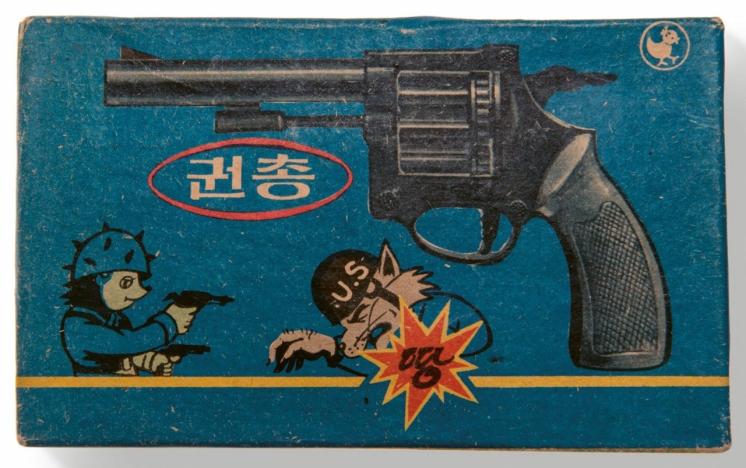
Animation Change
This isn’t the only change though! The art style has changed quite drastically, having shifted from hand-drawn backgrounds and animation cells to computer animation, Starting with Toon Boom software which actually began its use in episode 25 of the first season, before shifting to Adobe Flash from episode 29 (the third episode of season 2) onwards. The changes are quite pronounced, particularly when it comes to things like lighting, which tend to be much more dramatic. Animation is more fluid as well, being more easily captured through modern technology that the DPRK must have invested in.
That said, there were still some… Interesting issues. Most notably being episode 29 which featured one background that looked rather suspiciously like a still from Disney’s Pinocchio. I’m just saying! Not even that it’s a straight rip-off, more just… Tracing, I suppose.
No need to go too deep into the plot, but suffice to say, more delightful military drama, espionage and indeed murder. New characters join the cast and just when it seems to be entering a new peak! …It ends. A mere six episodes in and season 2 is unceremoniously ended on the 6th of June 2012, with no apparent follow up. Rather anti-climactic…
Impact in North Korea
If you ask a north Korean what the most famous cartoon in their country is, they’re actually not that likely to say Squirrel and Hedgehog. Boy General probably holds that title (which we’ve also talked about), with a hundred episodes broadcast. That’s not to say it isn’t popular, by no means! Merchandise is abundant, with backpacks, toys and statues of the characters quite commonly found. Art from the series can be seen in playgrounds and on the walls of DPRK nurseries. There are even some video games, most notably arcade light-gun shooters akin to the famed House of the Dead. I personally witnessed this, as well as a vase in a hotel with a Squirrel and Hedgehog image on it. It’s not their Simpsons, but it certainly holds a great deal of popularity in its own right.
Now, let’s be real. We all knew it was gonna be popular in Korea. Of course it is, it’s their show! What you’re wondering is why you should care. Why is it something that people in the western world also seem to like. How did that happen and to what extent? Well, let’s go into that!
Western Fandom
There’s a lot of theories about how it first got started in its foreign popularity. Supposedly it had been broadcast in the USSR in the early days, as well as China. The few visitors to the DPRK all those years ago may have brought some evidence back. It could have been Italian company Mondo TV, who has worked with SEK studio in the past, getting the rights to the early episodes of the show and redubbing it without the Korean propaganda aspect, as well as re-editing it into a completely different show called Brave Soldier. But given that most western fans of the original hate Brave Soldier and the fact that it doesn’t address the original, that’s only part of it.
Well, we can address the other possibility. Popularity for the show in the west mostly became a thing late-on into the second season. During the debut of ‘American’ character, Officer Yeou. Also known as Lieutenant Fox Vixen by many fans. Yeou is a female fox with a great deal of authority, a calm and villainous attitude and some oddly flirtatious acting around some of the protagonists. She also has what’s been commonly described as a ‘dominant streak’. So… Yes, I think you see where I’m going with this, fandom in the west was at least partly due to perverts.
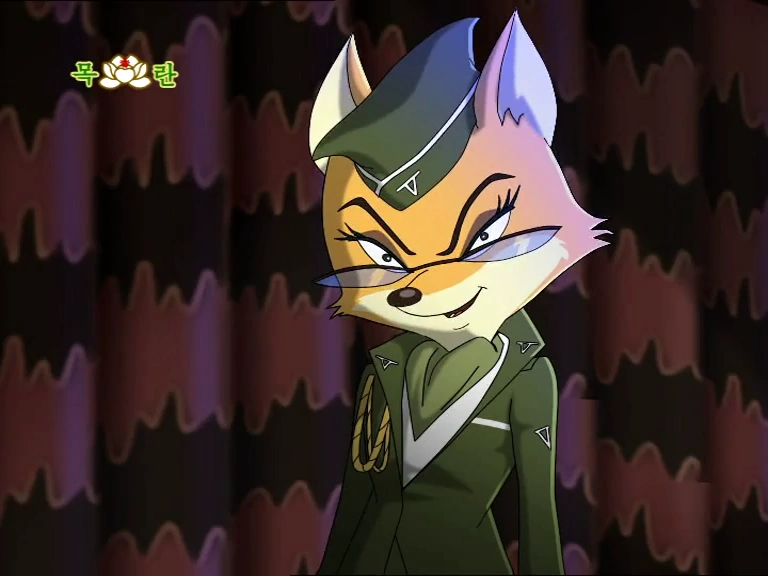
Putting that swiftly aside, this western fanbase have made themselves known in a fair few sectors. Fanart is in abundance (and no, not all of it is creepy stuff of Yeou), some fans have created their own merchandise and indeed, Squirrel and Hedgehog has been translated into English by devoted fans who understandably aren’t happy with the terrible translation job on the Korean English translations that can be bought in Pyongyang.
Conclusion
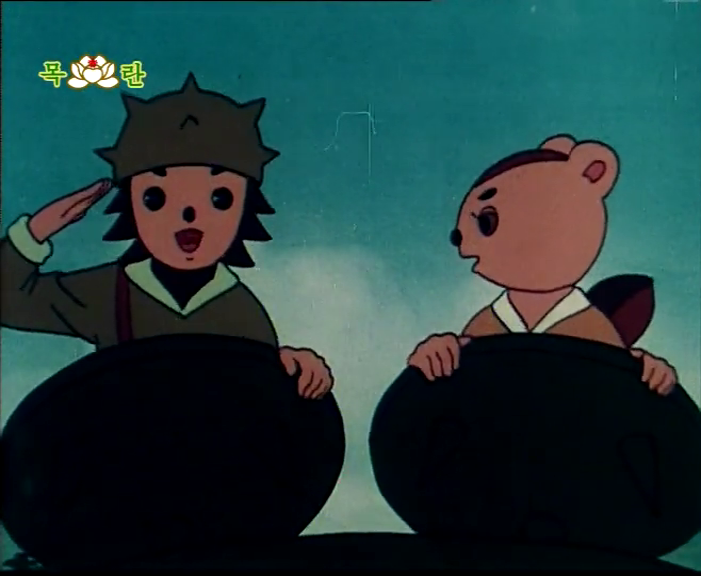
Squirrel and Hedgehog is an interesting cultural piece. Few pieces of north Korean media are as well known in the west, with even fewer still being catalogued as prominently. It’s not terribly hard to watch every episode translated and then spend hours trawling the internet for more information that occasionally surfaces from die-hard fans doing their research. Speaking of which, I’ll give a personal shout-out to the Squirrel and Hedgehog Wiki, as well as some of its administrators who helped me out with some fun tidbits and direction.
If you’d like to know more about the series, that’s definitely a good place to start. But if you’d like to know even more about the series, you could consider booking a tour and asking around in person!


